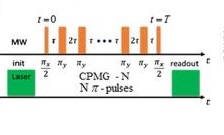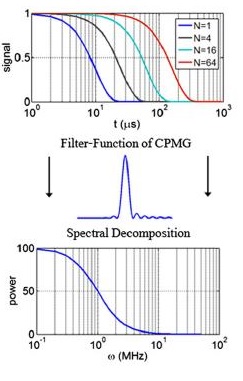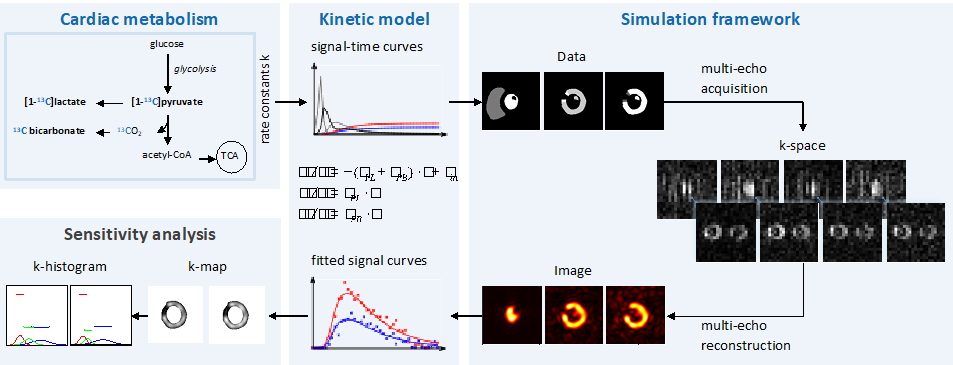Successful first year in the MetaboliQs project
On the way towards a breakthrough in cardiac metabolic MR imaging
Cardiovascular diseases (CVDs) are the number one cause of death globally: more people die annually from CVDs than from any other cause. The MetaboliQs project combines diamond-based nuclear spin manipulations and medical imaging to foster the understanding of bio-molecular metabolisms and therefore improve personalized health care. After one year of research, the interdisciplinary and multi-national research consortium can look back on a number of successful milestones, with great promise towards reaching the goal of the project: a novel diamond polarizer that is able to work at room temperature with a 160-times higher efficiency, offering a polarization that is 40-times faster and 4-times cheaper than before.

After 12 months into the MetaboliQs research and development activities, the project shines brightly. All deliverables as well as milestones have been submitted in time. The project is being pursued with enthusiasm by all consortium partners involved:
- Fraunhofer IAF in Freiburg, Germany;
- Element Six in Oxfordshire, UK;
- NVision Imaging Technologies in Ulm, Germany;
- Technical University of Munich, Germany;
- Bruker Corporation in Karlsruhe, Germany;
- Hebrew University of Jerusalem, Israel; and
- Swiss Federal Institute of Technology in Zurich, Switzerland
Highlights of the first 12 months were:
a) Diamond plates of up to 8 × 8 mm² in size, fabricated by Element Six
Using a microwave plasma chemical vapour deposition (MPCVD) growth process, Element Six has demonstrated a route to produce diamond plates > 8 × 8 mm2 with a low nitrogen concentration ([N] < 1015 cm-3). This is a significant increase in size over existing, commercially available, high purity diamond plates, which are typically no larger than 4.5 × 4.5 mm2. This is a notable milestone towards the hyperpolarisation system being developed in the EU-funded MetaboliQs project.

b) Diamond plates with up to 15 times surface enlargements were developed at Fraunhofer IAF
By application of dry etching using oxygen plasma technology, smooth diamond surfaces are transformed into tips-structured surfaces, which show a surface enlargement of up to 15 times. The surface is optimized with respect to wettability (hydrophilic) with pyruvate and will be tuned to incorporate a high density of nitrogen vacancy centers for hyperpolarization of 13C atoms in pyruvate.
c) Comprehensive characterization protocols for studying and optimizing the diamond substrates by Hebrew University in Jerusalem
The characterization protocol includes techniques for measuring a broad range of relevant parameters, including NV density, concentrations of other impurities, and precise spectral characterization of external noise sources. This characterization and optimization is crucial for achieving the desired performance of the hyperpolarization device.


Figure: Pulsed noise spectroscopy. Pulsed dynamical decoupling sequences (such as CPMG, left), are applied to measure the decoherence (top right), which is deconvolved with the control filter function (middle right) to result in the extracted noise spectrum (bottom right). © Hebrew University in Jerusalem (HUJI)
d) Electron paramagnetic resonance (EPR) protocols and experiments to investigate diamond samples with respect to nitrogen doping and nitrogen vacancy densities were established by Bruker Corporation
Samples 1-10 provided by NVision were characterized in terms of spin concentration by 9.6 GHz CW-EPR measurements. Spin concentrations for P1 and NV centers were provided. The NV concentrations determined under Laser irradiation and back-extrapolated to zero laser power were in the range from 0.2 to 5 ppm.
e) Development of a mesoscopic hyperpolarization setup to perform high throughput experiments was established at NVision Imaging Technologies
New ultrasensitive NV-NMR setup is useful for fast characterization of diamonds, but can also be used for sensitive hyperpolarization detection through the NV centers. Already showing >10-fold enhancement in diamond characterization speed, now being operationalized for first-of-its-kind microscale visualization of human metabolism.
f) Upscaling the polarization of diamonds in the path for Pyruvate polarization, diamond polarization up to 12 % of 13C spins at room temperature (NVision)
Achieved highest recorded polarization ( >12%) in nano-structured diamond stack; achieved in-diamond results of ~120,000-fold 13C hyperpolarization enhancement. Record high polarization achieved by generation of excellent near-surface NV properties by iterative optimization process between the partners and by implementing novel pulse sequences on diamonds. The combination of increased surface area and high-polarization will pave the way for polarization of biomedical agents for diagnosis of CVD.
g) Development of a MRI simulation framework at ETH Zurich
The MRI simulation framework includes modeling of cardiac metabolism using kinetic models to generate signal-time curves, which feed into data encoding and sampling for subsequent image reconstruction, which in turn allows data fitting to retrieve metabolic parameters. The framework permits sensitivity analysis and hence optimization of MRI metabolic imaging protocols.

MRI simulation framework including modeling of cardiac metabolism using kinetic models to generate signal-time curves, which feed into data encoding and sampling for subsequent image reconstruction, which in turn allows data fitting to retrieve metabolic parameters. The framework permits sensitivity analysis and hence optimization of MRI metabolic imaging protocols (Traechtler J et al.), © ETH Zurich
h) Optimization and evaluation of acquisition hardware as well as of diamond based hyperpolarization at TUM, Munich
Two MRSI sequences were implemented including EPSI and a spectrally selective 3D bSSFP sequence. The bSSFP sequence provides 2 mm3 isotropic spatial resolution and 1.8 s temporal resolution and was able to highlight pyruvate-to-lactate conversion in multiple organs and a lymphoma tumor model. A cryogenically cooled 1H radiofrequency coil (“cryo coil”) and associated infrastructure have been installed and are operational. A 13C cryo coil was just delivered and is currently tested
With the success of the first year, the project partners have a very positive outlook into the future. As results unfold, the consortium enters into scientific exchange with the public as well as with specialists in the fields. Close collaborations with other research projects in the European Quantum Flagship have also been established, especially with project AsteriQs. Both projects will organize a joint summer school on Quantum Sensors in Cargese, Corse, in fall 2020.
-----


This project has received funding from the European Union’s Horizon 2020 research and innovation program under grant agreement No 820374.
The use of the attached photographs is only permitted in relation to this press release.
